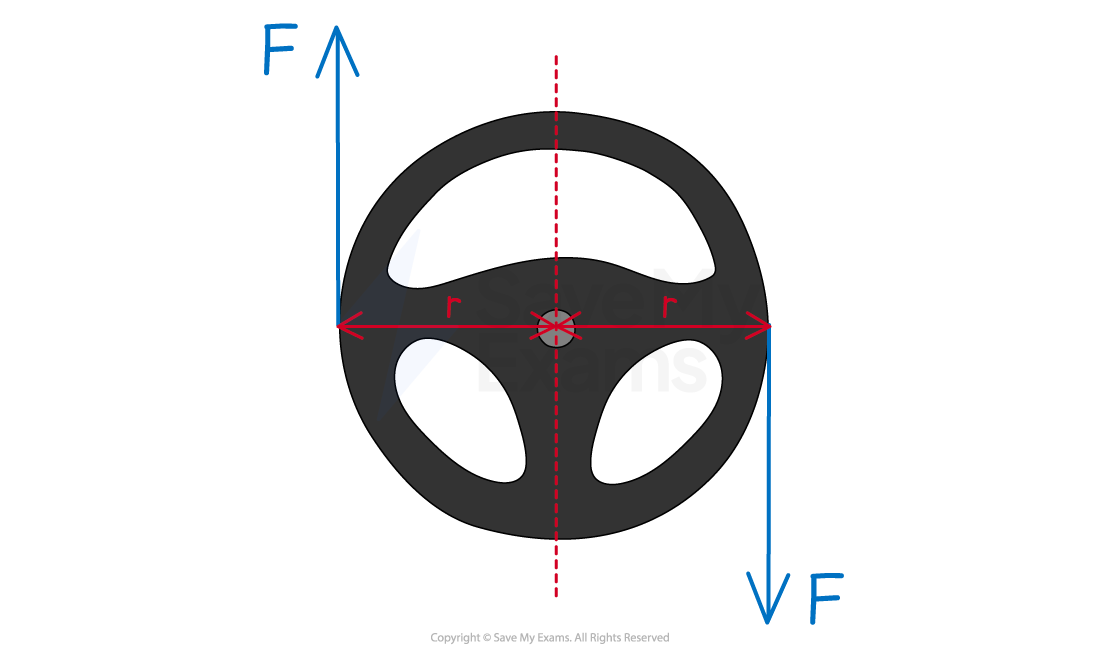Torque (AQA A Level Physics): Revision Note
Exam code: 7408
Torque
The change in rotational motion due to a turning force is called torque
The torque of a force F about an axis is given by
Where:
= torque (N m)
F = applied force (N)
r = perpendicular distance between the axis of rotation and the line of action of the force (m)
Torque of a perpendicular force

The torque applied by a cyclist on a bicycle pedal can be determined using the magnitude of the applied force, from the cyclist, and the distance between the line of action of the force and the axis of rotation, the length of the crank arm r
Torque of a Couple
When applied to a couple (2 forces), torque can be described as:
The sum of the moments produced by each of the forces in the couple
Torque of a couple on a steering wheel

The steering wheel is in rotational equilibrium since the resultant force and resultant torque are zero. This means it does not have linear or angular acceleration.
For example, the torque provided by a couple on a steering wheel of radius r is
Therefore, the torque of a couple is equal to double the magnitude of the torque of the individual forces
The forces are equal and act in opposite directions
Therefore, couples produce a resultant force of zero
Due to Newton’s Second law (F = ma), the steering wheel does not accelerate
In other words, when the force is applied, the steering wheel rotates with a constant angular speed but remains in the same location
Worked Example
A grinding wheel is used to sharpen the edges of pieces of wood in a school workshop. A piece of wood is forced against the edge of the wheel so that the tangential force on the wheel is a steady 12.0 N as the wheel rotates. The diameter of the wheel is 0.13 m.
Calculate the torque on the grinding wheel, giving an appropriate unit
Answer:
Step 1: State the equation for torque
Step 2: Calculate the perpendicular distance from the axis of rotation
This is the radius of the wheel since the rotation is from the centre of the wheel
Step 3: Substitute the values
Step 4: State the appropriate unit
Examiner Tips and Tricks
The terminology in this section can get confusing. For example, a moment is not a 'turning force' - the turning force is only part of the moment, the moment is the effect that the turning force has on the system when applied at a distance from a turning point, or pivot.
This is often linked with content from the moments section of the course.
Ultimately, when you carry out calculations, make sure you can identify
The magnitude of the applied force
The perpendicular distance between the force and the turning point (along the line of action)
When considering an object in rotational equilibrium, choosing certain points can simplify calculations of resultant torque. Remember, you can choose any point, not just the axis of rotation.
To simplify your calculation, choose a point where the torque of (most of) the forces are unknown, or when you need to determine where the resultant torque is zero. To do this, choose a point through which the lines of action of the forces pass.

Unlock more, it's free!
Did this page help you?